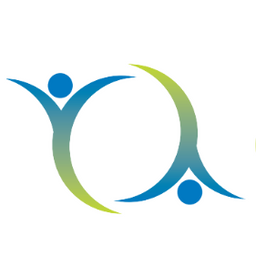Topic: Trends and Issues
My Session Status
Micro-credentials and Blockchain in Education
Rory McGreal, Athabasca University
Track: Institutional technology/ Volet: La technologie institutionnelle
Type: Innovative teaching, technology or design technique
Name of the innovation: Micro-credentials and Blockchain
Type of innovation: Technology
How the innovation works:
Micro-credentials can fit seamlessly into credit recognition frameworks, and be instantly verifiable. They can include all necessary information about the learning it represents. Blockchain enhances their efficiency and security, storage and management of credentialing data. Students control their own attestations of their knowledge and skills.
How to apply the technique:
Micro-credentials can be applied as easily accessible and transparent evidence of skills or knowledge, certified by an authority. They can be applied directly by learners primarily as proof to employers, and others of their qualifications, but also for a multitude of other purposes, such as accumulating or stacking credits towards a specific qualification, as evidence of skills or competencies. Blockchain in education is in the very early stages of adaptation. It can be described as a digital, ledger that is distributed on a network. The transactions are secured with encryption, verified and recorded by the network nodes.The original records cannot be deleted or changed and all changes can be easily traced as each new block in the chain is time-stamped.
The Challenges of Maker Education in Formal and Informal Education Settings
Les défis de l'éducation makers dans les contextes d'éducation formelle et informelle
Nathalie Duponsel, and Ann-Louise Davidson, Concordia University
Track: Evidence-based practices in teaching/ Volet: Pratiques de l'enseignement fondées sur des preuves
Type: Research presentation
Rationale for the study:
Rapid advances in technology, globalization, and demographic shifts are resulting in unprecedented changes in our lived experience (Care, Kim, Vista, & Anderson, 2018; Education Commission, 2016; Grand-Clements, Devaux, Belanger, & Manville, 2017; OECD, 2016). As a result, leaders in industry (World Economic Forum, 2020) and education systems around the world (Care et al., 2018), including Canada (Government of Canada, 2016), are increasingly calling for education that fosters skills such as creativity, problem-solving, and collaboration. Popularly referred to as 21st century skills, these skills are believed to be essential for functioning and thriving in the Fourth Industrial Revolution (Schwab, 2016) that we have entered. Many argue that making (creating or modifying an artefact by hand or with digital fabrication tools, using skills from multiple disciplines) is ideal for developing these skills in learners (Halverson & Sheridan, 2014; Davidson & Price, 2017), but integrating maker learning experiences into formal and non-formal (e.g. libraries, museums) education settings is challenging given current education culture and institutional structures (Davidson & Duponsel, 2021).
Research questions:
The aim of this study was to identify the challenges that educators encounter when designing and facilitating maker learning experiences so that recommendations can be made to formal and non-formal education institutions to better provide the necessary conditions for learning through making.
Methodology:
Semi-structured interviews were conducted with 30 educators from schools, colleges, universities, libraries, museums, and after-school youth centres. Open and axial coding of the interview transcripts was conducted to identify themes related to the challenges educators encountered when designing and facilitating maker learning experiences with learners.
References:
Care, E., Kim, H., Vista, A., & Anderson, K. (2018). Education system alignment for 21st century skills: Focus on assessment. In Center for Universal Education at the Brookings Institution. https://cutt.us/0EekQ
Davidson, A.-L., *Duponsel, N. (2021). Building a makerspace in a youth center and imagining futures. 2021 IEEE International Symposium on Technology and Society (ISTAS), 2021, pp. 1-7, doi: 10.1109/ISTAS52410.2021.9629131.
Davidson, A.-L. & Price, D. (2017). Does your school have the maker fever?: An experiential learning approach to developing maker competencies. LEARNing Landscapes, 11(1), 103-120.
Education Commission (2016). The Learning Generation: Investing in in Education for a Changing World. The International Commission on Financing Global Education Opportunity. http://report.educationcommission.org/wp-content/uploads/2016/09/Learning_Generation_Full_Report.pdf.
Government of Canada (2016). Canada: A Nation of Innovators https://www.ic.gc.ca/eic/site/062.nsf/vwapj/InnovationNation_Report-EN.pdf/$file/InnovationNation_Report-EN.pdf
Grand-Clement, S., Devaux, A., Belanger, J., & Manville, C. (2017). Digital learning: Education and skills in the digital age. Cambridge, UK: RAND Corporation. https://www.rand.org/pubs/conf_proceedings/CF369.html
Halverson, E. R., & Sheridan, K. M. (2014). The maker movement in education. Harvard Educational Review, 84(4), 495-504. https://doi.org/10.17763/haer.84.4.34j1g68140382063
Organization for Economic Co-operation and Development (OECD). (2016). Innovating education and educating for innovation: The power of digital technologies and skills. Paris, France: OECD Publishing. http://dx.doi.org/10.1787/9789264265097-en
Schwab, K. (2016). The fourth industrial revolution. New York, NY: Crown Business.
World Economic Forum (2020). Schools of the Future: Defining New Models of Education for the Fourth Industrial Revolution. https://www.weforum.org/reports/schools-of-the-future-defining-new-models-of-education-for-the-fourth-industrial-revolution
